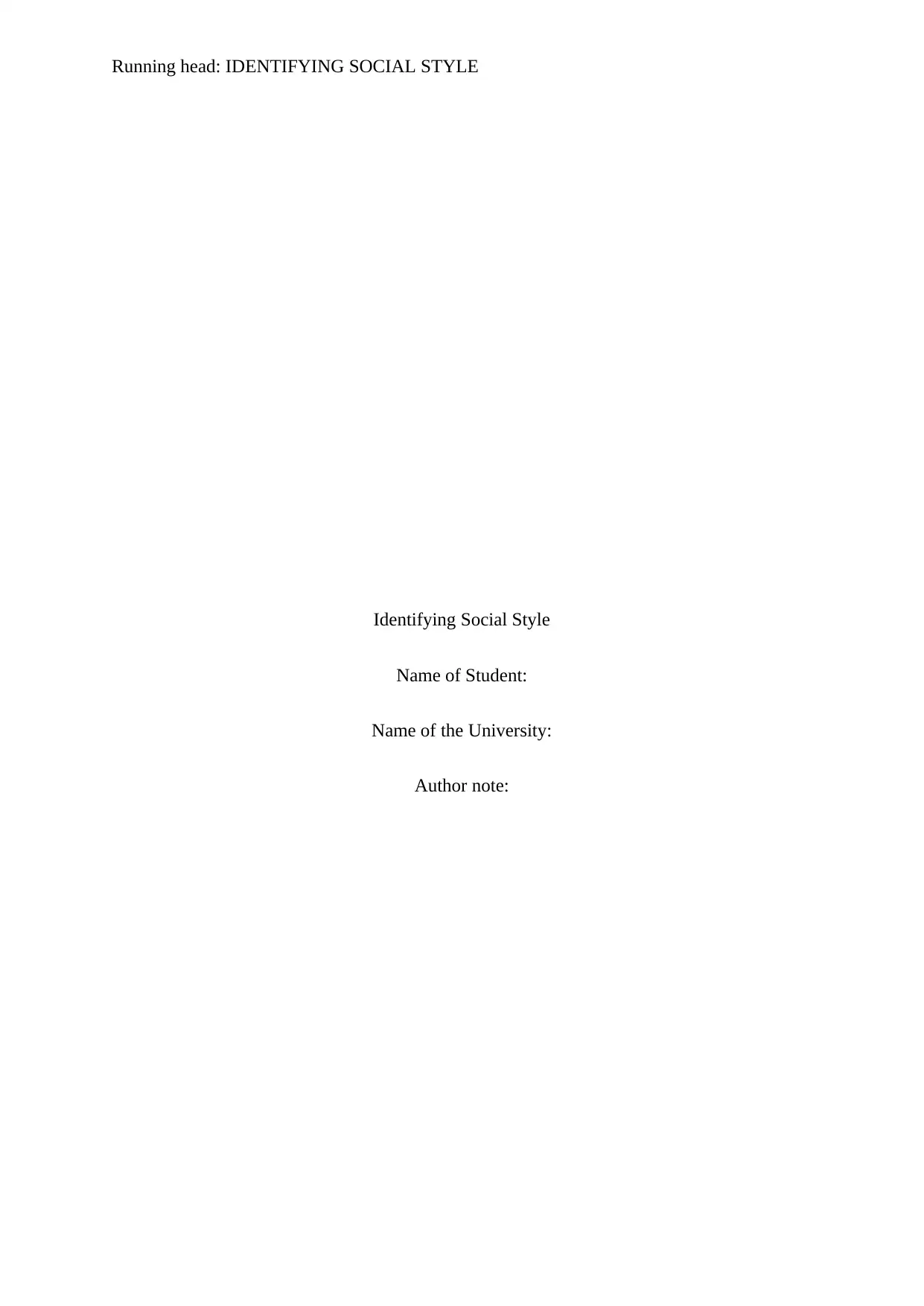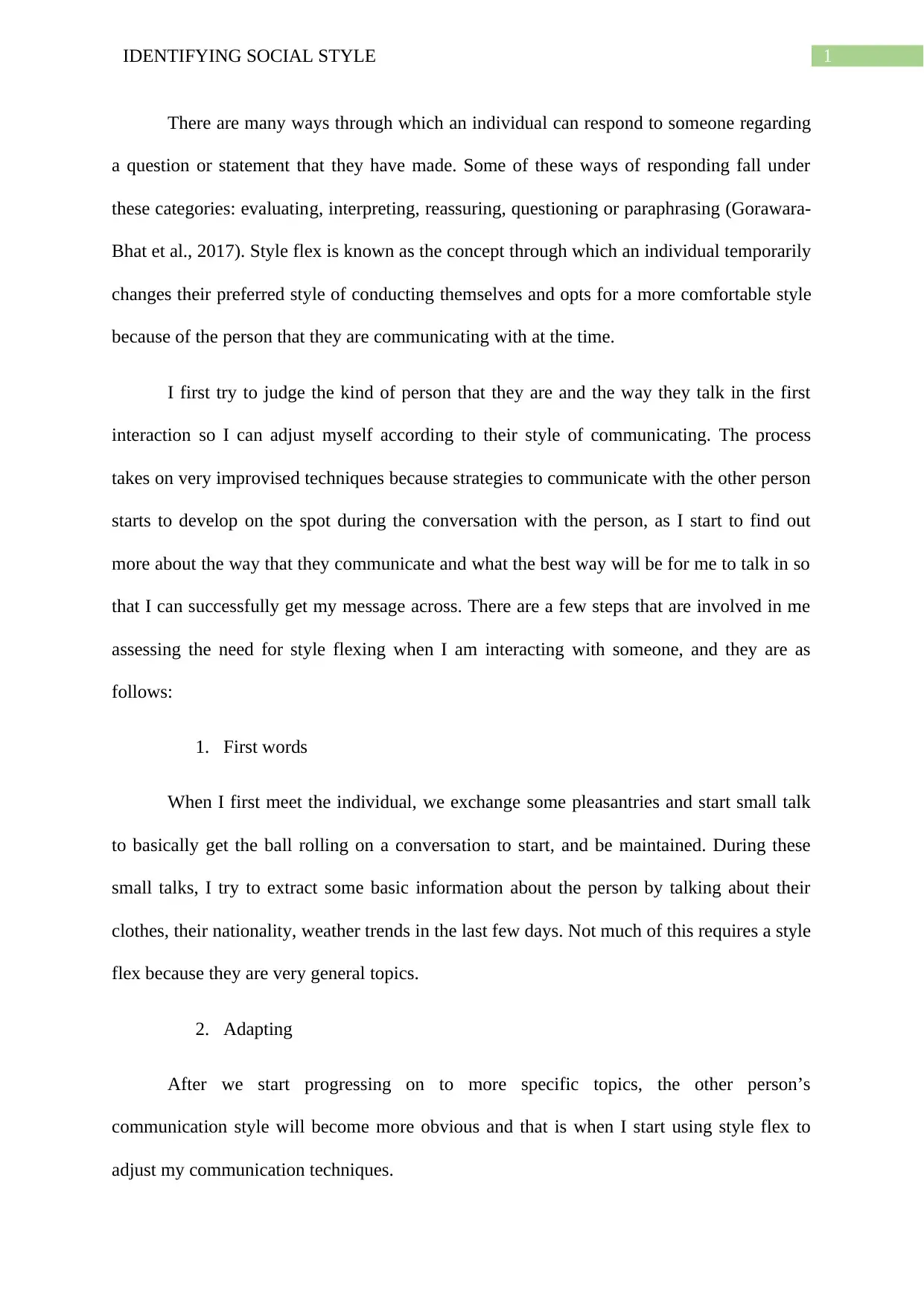Communication and Social Style Identification Report - University
VerifiedAdded on 2023/03/17
|5
|842
|100
Report
AI Summary
This report, titled "Identifying Social Style," explores the concept of style flexing and its role in effective communication. The author, a student, reflects on their personal communication style, highlighting the importance of adapting to different individuals to successfully convey messages. The report begins with an overview of communication styles, including evaluating, interpreting, reassuring, questioning, and paraphrasing. It then delves into the author's approach to style flexing, describing the process of assessing the other person's communication style through initial interactions and adapting their own techniques accordingly. The report includes a self-assessment questionnaire to determine assertiveness and responsiveness scores, revealing high scores in both areas. The author's friend confirms these results, describing them as assertive, responsive, and a good listener. Finally, the author identifies areas for improvement, such as avoiding quick assumptions. The report emphasizes the significance of style flexing in effective communication and the importance of assessing the needs of others to modify responses appropriately.
1 out of 5












![[object Object]](/_next/static/media/star-bottom.7253800d.svg)